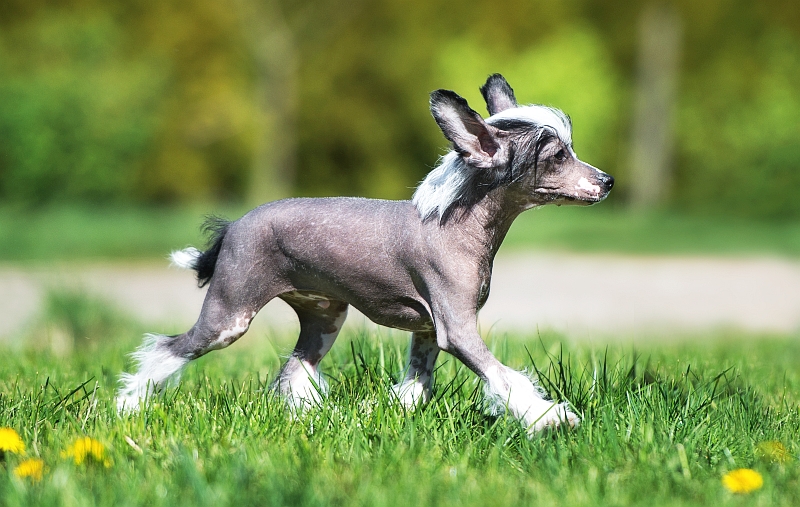There are four recognized hairless dog breeds, which we will cover below; however, it is important to know that any dog breed can produce hairless offspring—it is just a matter of the presence of a genetic mutation. This also means that puppies of hairless dog breeds can have fur.
What Causes Hairlessness in Dogs?
As with any other hereditary trait and characteristic, hair (along with hairlessness) also depends on genetics. Hairlessness is caused by a genetic mutation, and these mutations can be caused by mutation within both dominant and recessive genes.
A mutation within a dominant gene is more likely to produce a hairless offspring. So a dog that carries a dominant gene for hairlessness is significantly more likely to produce puppies without hair than one with a recessive gene with the same mutation. If the mutation is present within a dominant gene, it will not require intervention by breeders, and selective breeding to continue the production of hairless puppies—this will occur naturally. On the other hand, if the recessive gene is the one with hairlessness mutation, then the chances of hairless offspring, without human intervention (selective breeding) is greatly diminished.
If two hairless dogs, which are of the same breed, are mated, and these dogs both have the dominant gene mutation for hairlessness, then two thirds of their offspring will be hairless, while the remainder will have fur. If within the same scenario, one of the parents is not hairless, then half of the resulting offspring will be hairless.
Recognized Hairless Dog Breeds
As previously mentioned, there are only four dog breeds which are officially recognized as hairless.
Chinese Crested: Despite the name, the Chinese Crested (pictured above) is believed to have originated from Africa. The hairless Chinese Crested is not completely hairless, and has a prominent tuft of hair on top of its head, legs, and tail.
Peruvian Inca Orchid: Usually called the Peruvian Hairless, the Inca Orchid also has a furry variety, but only the hairless type is officially recognized. The Peruvian Hairless comes in three sizes standing as tall as 26 inches, and weighting as much as 55 pounds.
American Hairless Terrier: An off-shoots of the American Rat Terrier, the American Hairless is now considered its own distinct breed with highly developed hunting instincts. Unlike other hairless dog breeds, this breed does not have the unusual canine teeth development of having extra canine teeth, but lacking premolars.
Xoloitzcuintli: Better known as the Mexican Hairless, the Xolotzcuintli, and have been documented as having been in Mexico as far back as 3,000 years. Originally thought to be related to the Chinese Crested, genetic testing has proved that no such relationship exists.
There are a few other dog breeds that have this hairless mutation, and can produce hairless puppies; however, none of the other breeds are officially recognized breeds of dog by major international clubs.

